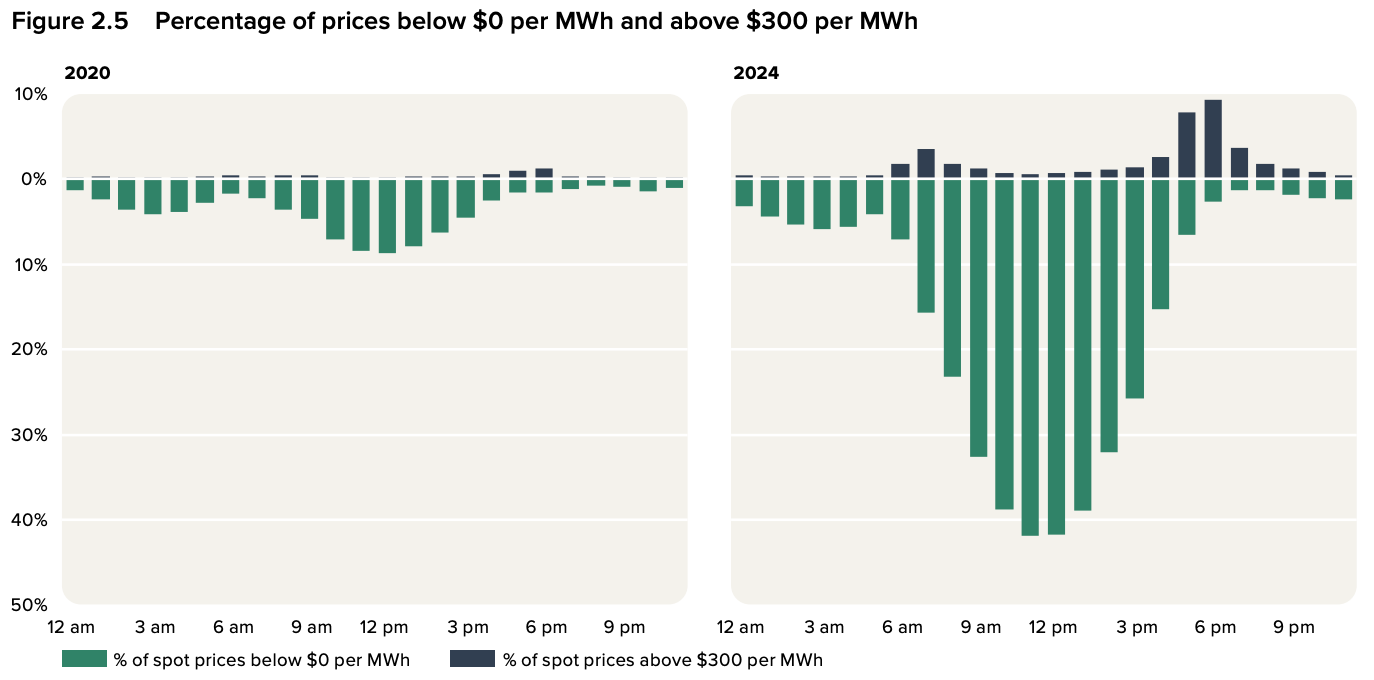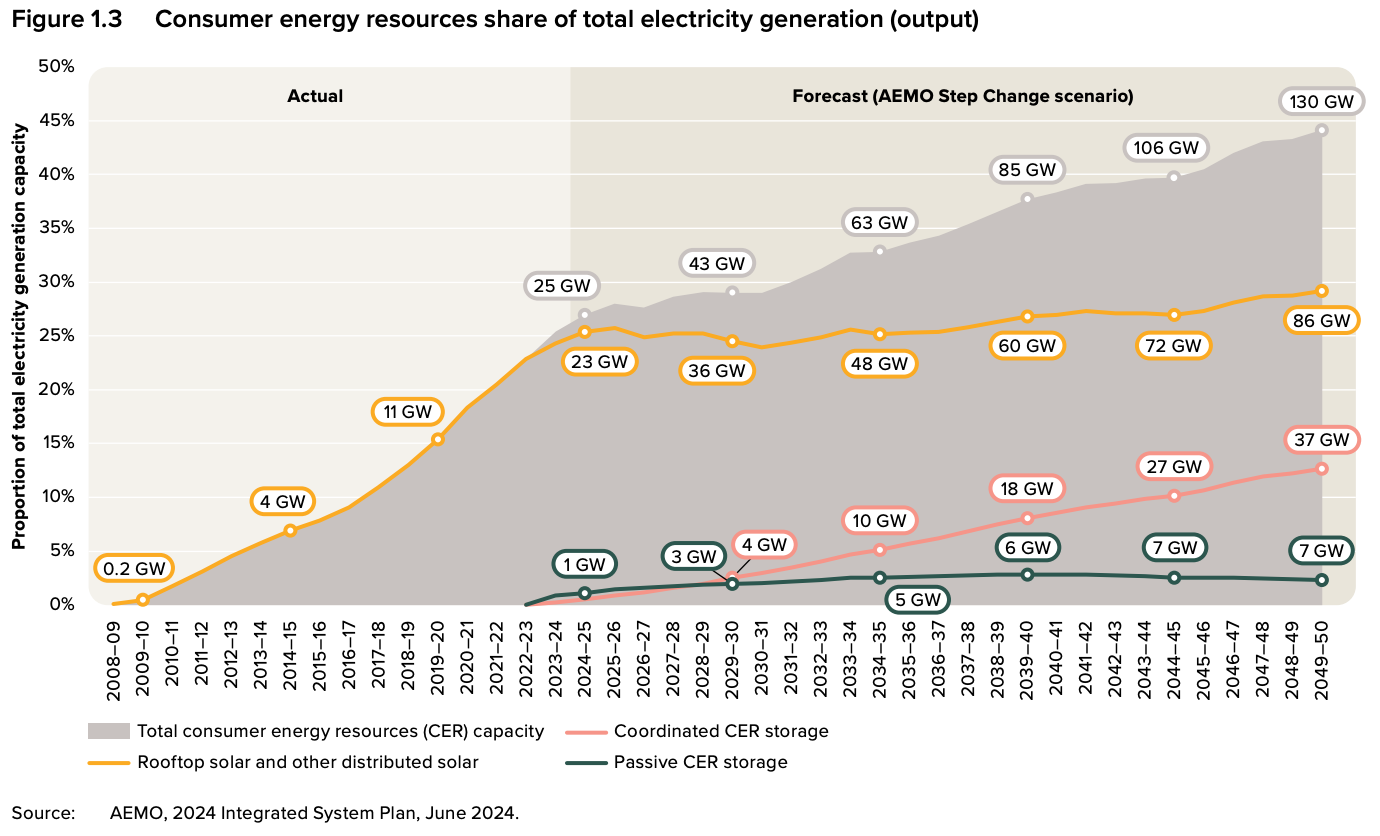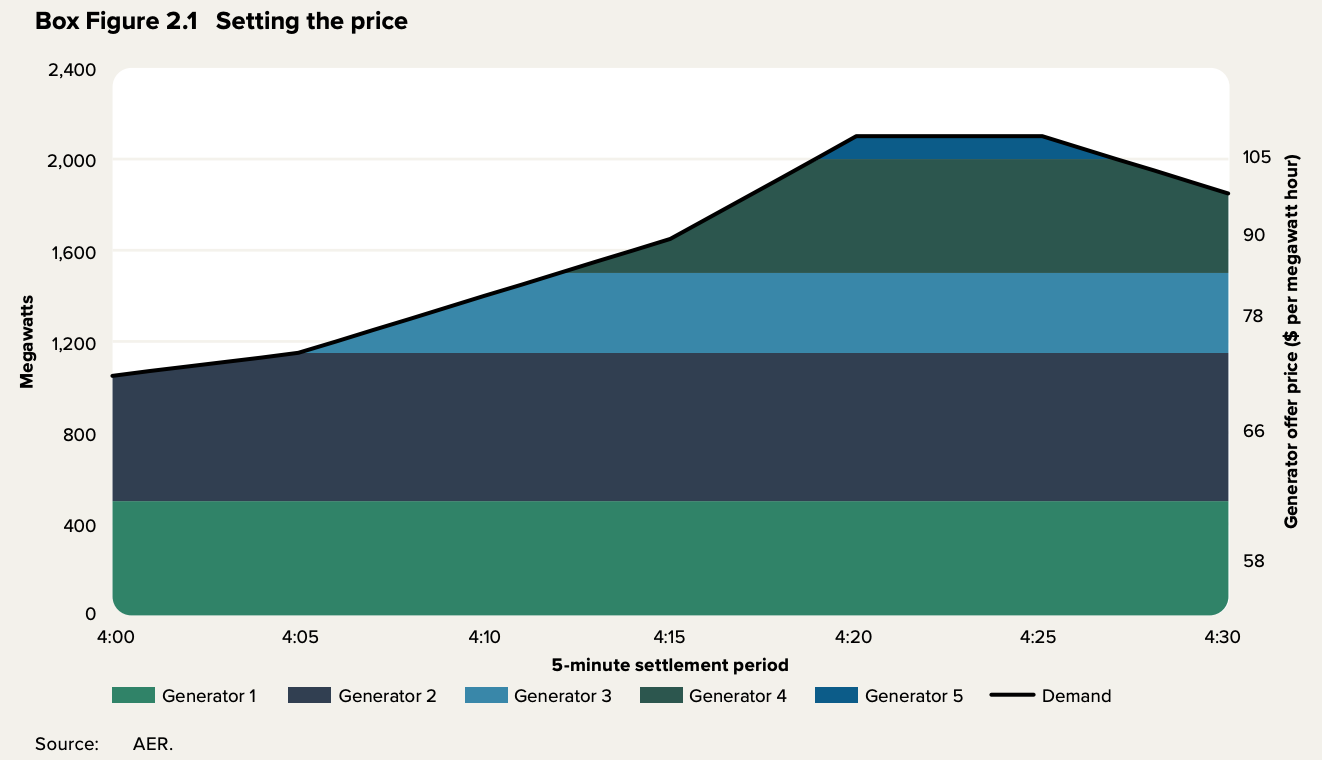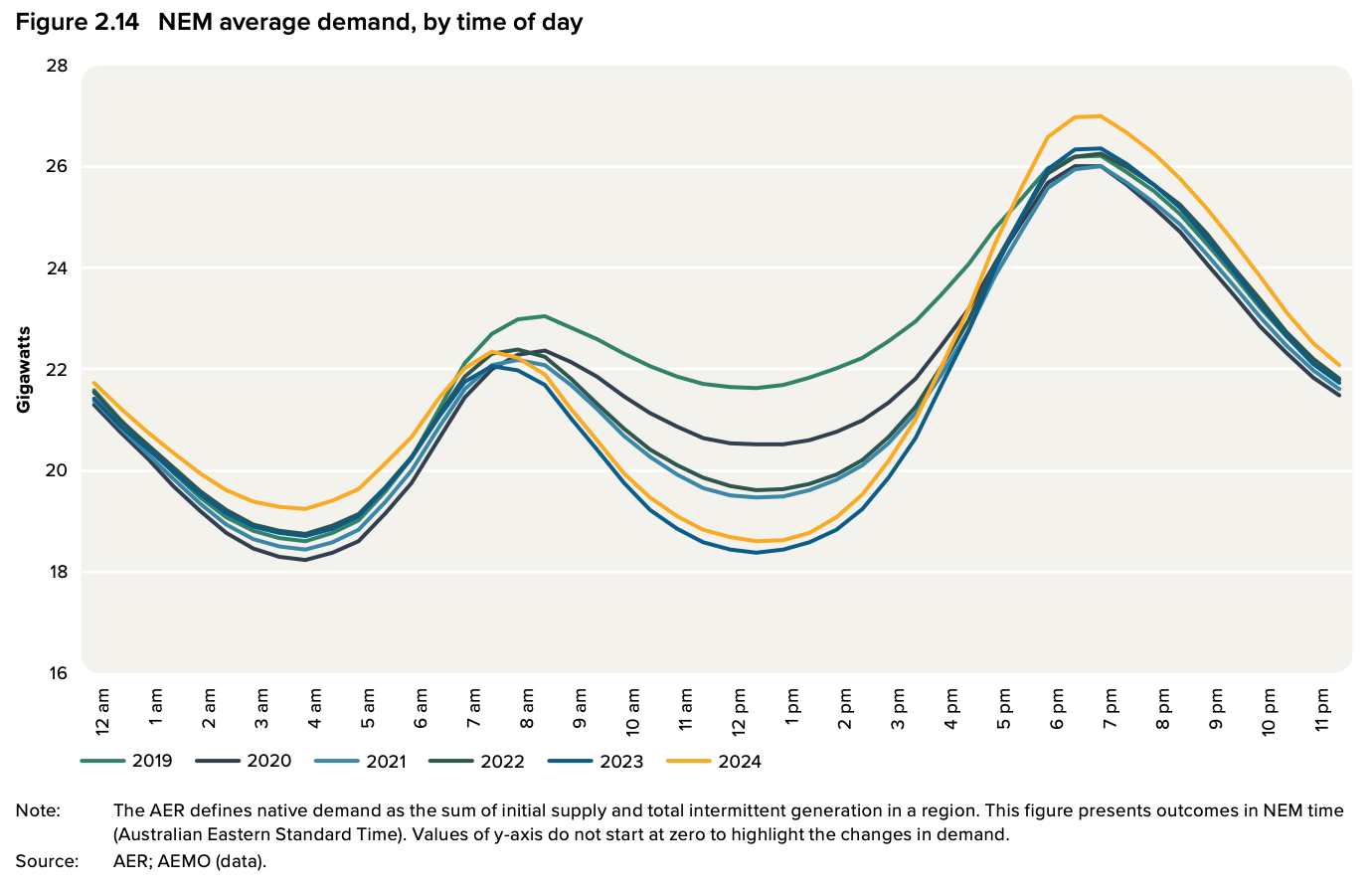Hi everyone, Chris here.
The Australian Energy Regulator (AER) has released its State of the Energy Market 2025. I’ve read it cover to cover so you don’t have to. Below is what’s changing in the grid, why it matters, and how Amber is helping you make the most of it.
The short version
- Midday electricity keeps getting cheaper, evenings are spikier.
Negative wholesale prices are now common late morning to early afternoon, while short evening spikes are more likely. Shifting flexible loads to the day, or letting a battery or EV soak up cheap solar, is worth more than ever. - Rooftop solar and home batteries are booming.
Rooftop solar already supplies a big slice of daytime demand, and home batteries are accelerating. That is good news when we orchestrate them well. - Extreme spikes haven’t disappeared.
The market price cap jumped to $20,300/MWh in July 2025. It highlights why shifting use and storing energy will play an even bigger role in keeping costs down and the system steady.
What’s changing in the market
- Daytime is getting cheaper, evenings are getting pricier
In 2024, 15% of all five-minute prices were negative (up from 3.5% in 2020). Between 11 am and 12 pm, prices were negative about 42% of the time. High prices above $300/MWh between 6 pm and 7 pm rose to almost 10%. Translation: the grid is swimming in cheap solar at lunchtime and under pressure in the early evening.

- Rooftop solar keeps reshaping demand
More than 4 million homes now have rooftop solar (over 22 GW). That is why grid demand slumps on sunny afternoons and rises in the evening. In Q1 2025, rooftop solar supplied 14.7% of NEM generation. Home batteries are following fast, with 74,582 installed in 2024.

- Smart orchestration is the big unlock
AEMO expects coordinated home and community storage to grow to about 37 GW by 2050, making consumer energy resources the largest source serving demand. With good timing across households, EVs and batteries, bills fall, emissions drop, and reliability improves. - Networks are catching up, slowly
Australia needs roughly 5,000 km of new transmission by 2034 (and 10,000 km by 2050). Costs are up and projects face delays, which can mean more regional price differences until new lines arrive. - Extreme spikes are still possible
The market price cap increased to $20,300/MWh from 1 July 2025. You will not see this often, but it is a reminder why shifting use or using stored energy in the evening matters.

- Winter gas can still bite
Gas covers the system in calm, cold condition. The ACCC is warning of likely shortfalls in southern states from late 2025 through 2026, which is one reason winter evenings may see sharper price spikes.
What this means for you on Amber
- If you can shift, the savings are growing
Using more power between 10 am and 3 pm, when prices are often lowest, helps you capture daytime solar. Small shifts like laundry, dishwashers, pool pumps and hot-water boosts add up. Live wholesale prices and app alerts make it easier to spot cheap windows.

- Evenings are where batteries and EVs shine
Charging your EV or topping up a home battery during the day, then using that energy in the evening, is increasingly valuable. If you have opted into smart orchestration with Amber, we aim to do the heavy lifting for you by soaking cheap solar and reducing exposure at peaky times. - Flexible and export-aware tariffs are coming
Networks are shifting to tariffs that reward using power when the grid has spare capacity (often daytime) and will increasingly signal when to export. We will pass those signals through in clear, simple ways so you can benefit. - If you are struggling, protections are getting stronger
Please reach out early if bills are getting tough. New national rules start in 2026, but you do not need to wait to ask for help.
What Amber is doing for you
- Better daytime “solar soak” experiences.
We are always improving alerts and automations to help you shift into the cheapest daytime hours, and expanding integrations so more devices can participate. - Smarter evening protection.
For customers with batteries and EVs who opt in, we are focusing orchestration on roughly 4 pm to 9 pm, when prices are more likely to spike, and where flexible capacity matters most. - Clearer comms in winter.
When the market looks tight, often on cold, still evenings, we will keep you posted on what to expect and how to respond. - Advocacy for a fairer, smarter system.
We back flexible tariffs and stronger consumer protections because they reward the very behaviours - like shifting use and smarter exports - that help bring costs down for everyone.
What you can do now
- Make the most of daytime solar
Shifting appliances like the dishwasher, washing machine, pool pump or EV charger into the 10 am–3 pm window helps you soak up the cheapest, greenest power. Even small shifts can add up to meaningful savings. - Opt into smart control
If you have a compatible battery or EV, enable smart control so we can soak up cheap solar during the day and shield you from evening peaks. - Turn on price alerts
Amber’s app alerts help you spot the cheapest windows and prepare for the occasional spike.
We built Amber so households can benefit from exactly the trends the AER highlights - cheap daytime renewables and smarter use at the peaks. These changes in the market aren’t just abstract charts; they’re real opportunities for you to cut costs and use more clean energy. Together, we’re showing how everyday households can drive the energy transition from the ground up. Thanks for being part of the shift.
All graphs and figures in this blog are sourced directly from the AER’s State of the Energy Market 2025 report.










